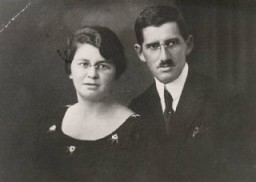<< Previous | Displaying results 2151-2175 of 2611 for "" | Next >>
-
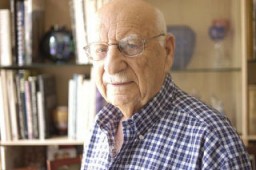
-
Thomas at age 13 months
PhotoThomas at age 13 months with his father, Mundek Buergenthal. Czechoslovakia, June 1935.
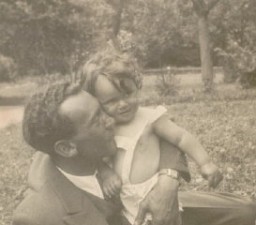
-
Thomas's parents, Mundek and Gerda
PhotoThomas Buergenthal's parents, Mundek and Gerda (b. 1912). Czechoslovakia, 1933 or 1934. With the end of World War II and collapse of the Nazi regime, survivors of the Holocaust faced the daunting task of rebuilding their lives. With little in the way of financial resources and few, if any, surviving family members, most eventually emigrated from Europe to start their lives again. Between 1945 and 1952, more than 80,000 Holocaust survivors immigrated to the United States. Thomas was one of them.

-
Three-year-old Thomas during a stay at a hotel in Czechoslovakia
PhotoThree-year-old Thomas Buergenthal during a stay at a hotel in Czechoslovakia, 1937. With the end of World War II and collapse of the Nazi regime, survivors of the Holocaust faced the daunting task of rebuilding their lives. With little in the way of financial resources and few, if any, surviving family members, most eventually emigrated from Europe to start their lives again. Between 1945 and 1952, more than 80,000 Holocaust survivors immigrated to the United States. Thomas was one of them.
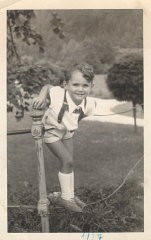
-
Three-year-old Thomas Buergenthal with his parents
PhotoThree-year-old Thomas Buergenthal with his parents, Mundek and Gerda. Czechoslovakia, June 1937. With the end of World War II and collapse of the Nazi regime, survivors of the Holocaust faced the daunting task of rebuilding their lives. With little in the way of financial resources and few, if any, surviving family members, most eventually emigrated from Europe to start their lives again. Between 1945 and 1952, more than 80,000 Holocaust survivors immigrated to the United States. Thomas was one of them.
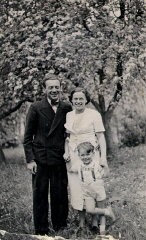
-
Thomas in his toy car
PhotoPhotograph of a young Thomas Buergenthal posing in his toy car as his mother sits alongside. 1936.

-
Thomas Buergenthal with the soldier who realized that Thomas was Jewish and took him to an orphanage
PhotoThomas (left), 6 months after liberation, with a soldier who realized that Thomas was Jewish and took him to an orphanage, ca. 1945. Thomas was eventually reunited with his mother. With the end of World War II and collapse of the Nazi regime, survivors of the Holocaust faced the daunting task of rebuilding their lives. With little in the way of financial resources and few, if any, surviving family members, most eventually emigrated from Europe to start their lives again. Between 1945 and 1952, more than…

-
Thomas Buergenthal with his mother, Gerda, in Goettingen
PhotoThomas Buergenthal with his mother, Gerda, in Goettingen, Germany, 1950. With the end of World War II and collapse of the Nazi regime, survivors of the Holocaust faced the daunting task of rebuilding their lives. With little in the way of financial resources and few, if any, surviving family members, most eventually emigrated from Europe to start their lives again. Between 1945 and 1952, more than 80,000 Holocaust survivors immigrated to the United States. Thomas was one of them.
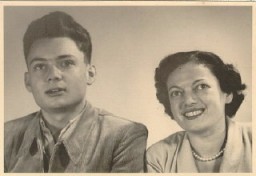
-
Thomas with his mother, Gerda, before Thomas's departure for the United States
PhotoThomas Buergenthal with his mother, Gerda, before Thomas's departure for the United States. Bad Neuheim, Germany, summer 1951. With the end of World War II and collapse of the Nazi regime, survivors of the Holocaust faced the daunting task of rebuilding their lives. With little in the way of financial resources and few, if any, surviving family members, most eventually emigrated from Europe to start their lives again. Between 1945 and 1952, more than 80,000 Holocaust survivors immigrated to the United…

-
Thomas Buergenthal after arriving in the United States
PhotoThomas (standing, right), then known as "Tommy," with relatives shortly after arriving in the United States. New Jersey, ca. 1952. With the end of World War II and collapse of the Nazi regime, survivors of the Holocaust faced the daunting task of rebuilding their lives. With little in the way of financial resources and few, if any, surviving family members, most eventually emigrated from Europe to start their lives again. Between 1945 and 1952, more than 80,000 Holocaust survivors immigrated to the United…

-
Thomas Buergenthal at New York University
PhotoThomas Buergenthal as a student at New York University, 1957–60. With the end of World War II and collapse of the Nazi regime, survivors of the Holocaust faced the daunting task of rebuilding their lives. With little in the way of financial resources and few, if any, surviving family members, most eventually emigrated from Europe to start their lives again. Between 1945 and 1952, more than 80,000 Holocaust survivors immigrated to the United States. Thomas was one of them.

-
Thomas as a law student
PhotoThomas Buergenthal as a law student, 1959–60. With the end of World War II and collapse of the Nazi regime, survivors of the Holocaust faced the daunting task of rebuilding their lives. With little in the way of financial resources and few, if any, surviving family members, most eventually emigrated from Europe to start their lives again. Between 1945 and 1952, more than 80,000 Holocaust survivors immigrated to the United States. Thomas was one of them.
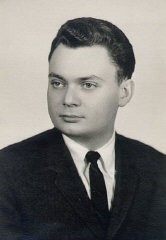
-
Thomas Buergenthal with his first wife, Dorothy
PhotoThomas with his first wife, Dorothy, at the Zeta Tau Alpha Spring Formal, 1957. With the end of World War II and collapse of the Nazi regime, survivors of the Holocaust faced the daunting task of rebuilding their lives. With little in the way of financial resources and few, if any, surviving family members, most eventually emigrated from Europe to start their lives again. Between 1945 and 1952, more than 80,000 Holocaust survivors immigrated to the United States. Thomas was one of them.
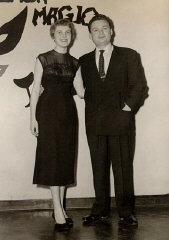
-
Judge Thomas Buergenthal
PhotoJudge Thomas Buergenthal, member of the Inter-American Court of Human Rights, San Jose, Costa Rica, 1980.
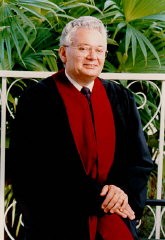
-
Photograph of Thomas Buergenthal's mother
PhotoPhotograph taken in 1984 of Thomas Buergenthal's mother, Gerda, then in her early 70s.

-
Judge Thomas Buergenthal with members of the Inter-American Court of Justice
PhotoJudge Thomas Buergenthal (front row, right) with other members of the Inter-American Court of Justice in San Jose, Costa Rica. Thomas served from 1979–91 and was president from 1985-1987. San Jose, Costa Rica, 1980.

-
Jimmy Carter, Thomas Buergenthal, and Andrew Young
PhotoFrom left to right: former US President Jimmy Carter, Judge Thomas Buergenthal, former UN ambassador Andrew Young. Judge Buergenthal was the director of the human rights program for the Carter Center from 1986–89.

-
Thomas Buergenthal at Auschwitz in 1995
PhotoThomas Buergenthal at Auschwitz in 1995, fifty years to the day after his forced march out of the camp as a child. Poland, 1995. With the end of World War II and collapse of the Nazi regime, survivors of the Holocaust faced the daunting task of rebuilding their lives. With little in the way of financial resources and few, if any, surviving family members, most eventually emigrated from Europe to start their lives again. Between 1945 and 1952, more than 80,000 Holocaust survivors immigrated to the United…
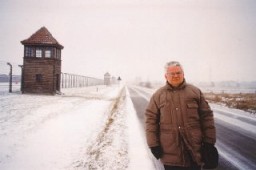
-
Thomas's three sons and granddaughter
PhotoThomas Buergenthal's three sons, Robert, John (holding daughter Eliza), and Alan. 1996. With the end of World War II and collapse of the Nazi regime, survivors of the Holocaust faced the daunting task of rebuilding their lives. With little in the way of financial resources and few, if any, surviving family members, most eventually emigrated from Europe to start their lives again. Between 1945 and 1952, more than 80,000 Holocaust survivors immigrated to the United States. Thomas was one of them.
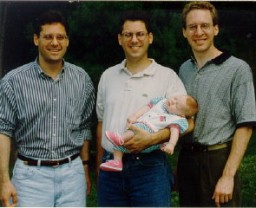
-
Judge Thomas Buergenthal and members of the United Nations Human Rights Committee
PhotoJudge Thomas Buergenthal (top row, fifth from left) and other members of the United Nations Human Rights Committee. 1995.

-
Formal portrait of Judge Thomas Buergenthal
PhotoJudge Thomas Buergenthal, formal portrait for the International Court of Justice in the Hague. ca. 2003.
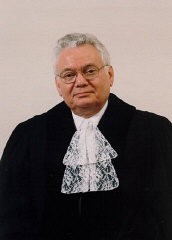
-
Photograph of Thomas Buergenthal with his wife, Peggy
PhotoPhotograph of Thomas with his wife, Peggy. With the end of World War II and collapse of the Nazi regime, survivors of the Holocaust faced the daunting task of rebuilding their lives. With little in the way of financial resources and few, if any, surviving family members, most eventually emigrated from Europe to start their lives again. Between 1945 and 1952, more than 80,000 Holocaust survivors immigrated to the United States. Thomas was one of them.

-
Regina (Laks) Gelb and her mother at the Busko-Zdroj spa
PhotoRegina and her mother at the Busko-Zdroj spa (note that her mother used a cane and little Regina has been given a child's cane). Poland, early 1930s.

-
Laks family photo
PhotoLaks family photo, Poland, ca. 1925. Sitting, left to right: Pola Laks (Regina's mother) with baby Hania, grandmother Sara Tennenblum, Aunt Andzia Tennenblum. Standing, left to right: Aunt Lodzia Laks, Aunt Regina Tennenblum, Izak Laks (Regina's father), Aunt Rozia Tennenblum, and Aunt Dora Laks.

-
